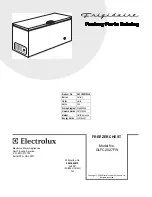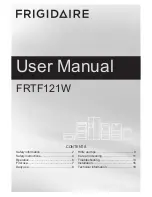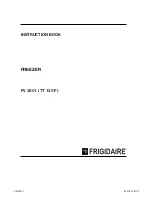
Chilling food
Page EN-20
them in the best possible condition over
the longest possible period. This will
mean that you avoid food waste:
– Place spreadable butter and cheese on
the upper large door shelf (13). This is
where the temperature is warmest.
– Store any preserves, glass jars and eggs
in the door shelves (13). Eggs are best
stored on the supplied egg tray.
– Place drinks cartons and bottles in the
small door shelves (15). To reduce the
load of the door hinges, place full con-
tainers closer to the door hinge.
– Store small bottles and tubes in the large
door shelf (13).
– Place securely closed bottles in the bot-
tle rack (9).
– Place cooked and baked foods on the
glass shelves (10).
– Place fresh meat, game, poultry, ba-
con, sausage and raw fish on the glass
shelf (10) immediately above the large
fruit/vegetable drawer (11). This is where
the temperature is lowest.
– Place fresh fruit and vegetables in the
fruit/vegetable drawers (11) and (12).
– Place frequently used bottles and drinks
cartons in the bar compartment (14) by
using the inner flap (33).
• Only store strong alcohol standing upright
and tightly closed.
• Allow hot food to cool before placing it in
the fridge.
• If you intend to refill the fridge with large
amounts of food, set ‘Quick refrigerating’
about 2 hours before you fill it.
If you intend to refill the fridge with
large amounts of food, set ‘Quick re-
frigerating’ about 2 hours before you fill
it (see page EN-15).
Maintaining quality
• To maintain the flavour and freshness of
food in the fridge, only place packaged
food in the fridge.
Use special plastic containers for food or
customary films.
• Place the food
– in the fridge in a way that allows the air to
circulate freely. Do not cover the shelves
with paper or anything similar.
– somewhere that is not directly against
the rear wall. Otherwise it may freeze
onto the rear wall.
















































